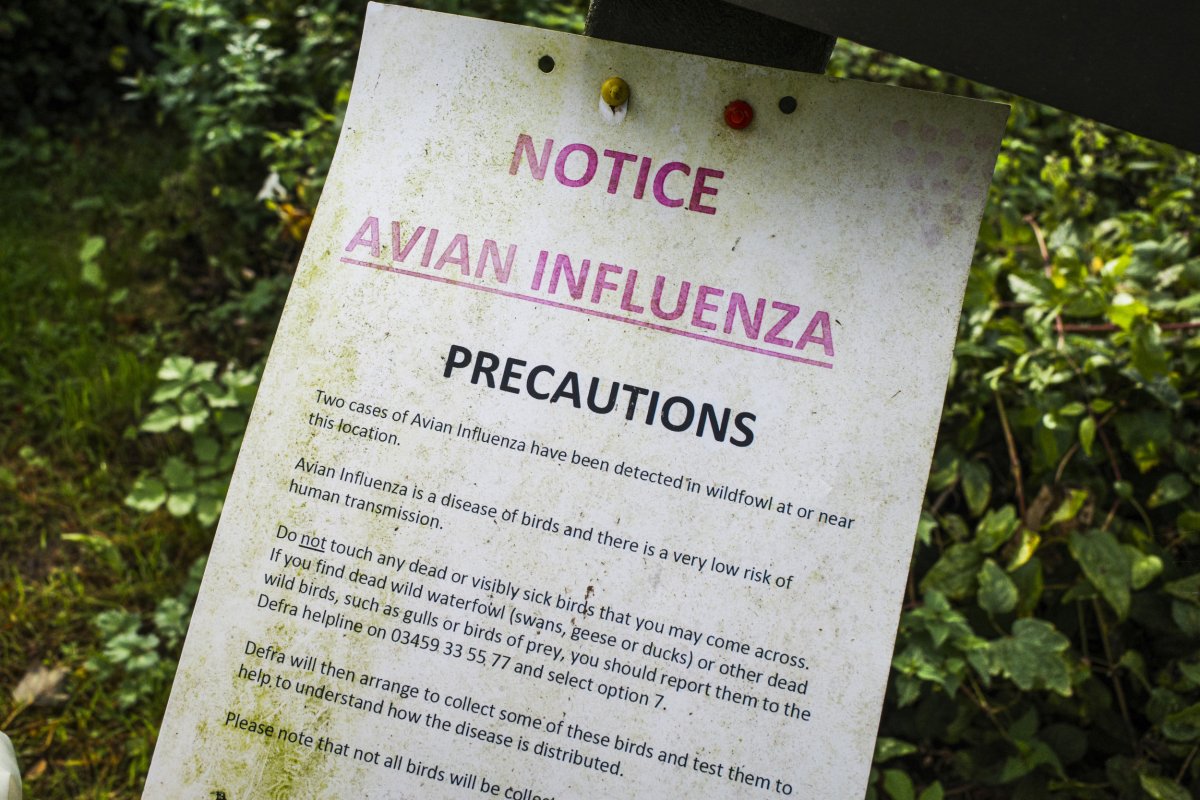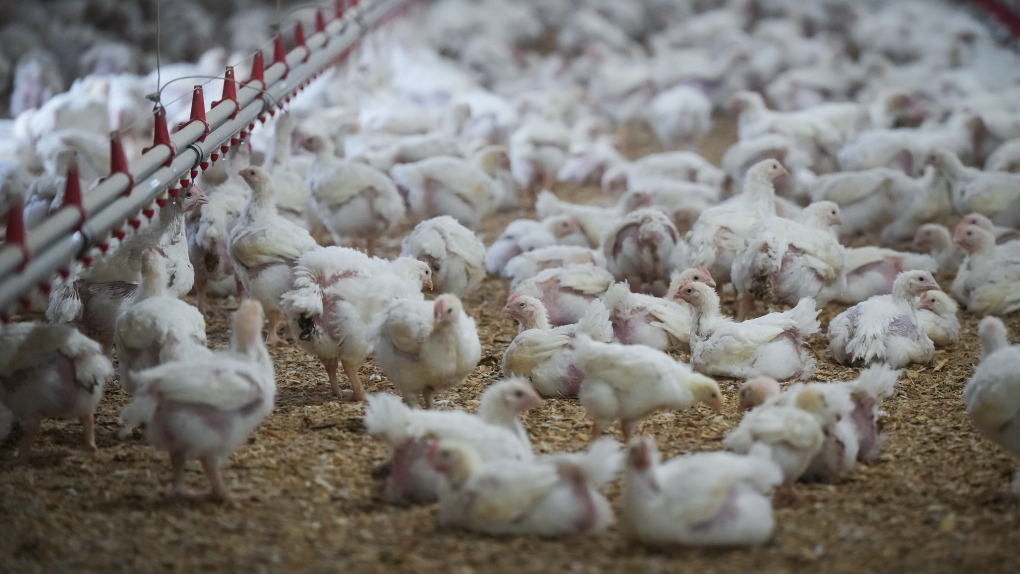Published Jan 01, 2025
A Canadian teen who contracted the H5N1 bird flu in early November has fully recovered after a prolonged battle with the disease.
However, genetic analysis of the virus that infected her revealed alarming mutations that could potentially enhance the virus's ability to target human cells and cause severe illness.
Why It Matters
The discovery, published in the New England Journal of Medicine, has raised concerns about the evolving nature of H5N1 and its increasing threat to human health.
With 66 human cases reported in the U.S. in 2024, experts are increasingly worried about the virus's evolving potential and its implications for future outbreaks.

What To Know
The 13-year-old girl, who had a history of asthma and obesity, arrived at a local emergency room on November 4 with conjunctivitis and fever. After being discharged without treatment, her condition worsened over the next few days, leading to respiratory distress and other complications. She was hospitalized on November 7, and by the following day, was transferred to a pediatric ICU, suffering from severe respiratory failure, pneumonia and acute kidney injury.
Despite being negative for common seasonal flu strains, she tested positive for influenza A and H5N1, leading doctors to suspect bird flu. Her condition continued to deteriorate, requiring intubation and ECMO life support. She was treated with three antiviral medications, and because of concerns about a cytokine storm, underwent plasma exchange therapy.
By November 16, her viral load had dropped significantly, and she was free of the virus after eight days of intensive care. Genetic sequencing of the virus revealed mutations in the strain she had contracted, specifically the D1.1 version of H5N1, which is closely related to the virus found in wild birds. The mutations appeared to enhance the virus's ability to replicate in human cells, suggesting a troubling potential for increased severity in human infections.
Other cases of H5N1 infection in the U.S., particularly those involving dairy cows and poultry, have shown the same mutated strain. Researchers believe these mutations likely emerged in the patients themselves rather than circulating in the environment, the Los Angeles Times reported.
Read more Bird Flu
What People Are Saying
Jennifer Nuzzo, director of the Pandemic Center at Brown University, told the L.A. Times: "It is worrisome because it indicates that the virus can change in a person and possibly cause a greater severity of symptoms than initial infection."
Dr. Paul Offit, a vaccine and infectious disease expert at Children's Hospital of Philadelphia, told NBC News: "I think if there were clear and definitive evidence that the virus has mutated to the point that it can bind to the binding receptors in the upper respiratory tract, meaning the lining of the nose, the lining of the throat, the lining of the windpipe and therefore reproduce itself in the upper respiratory tract, that would be worrisome. But that's not what the report said."
What Happens Next
The discovery of the mutations in the H5N1 virus calls for further surveillance and research to track how the virus may evolve in human hosts. Public health experts are urging increased monitoring of both animal and human cases to detect any potential for further mutations that could pose a greater threat to global health.
Researchers are also calling for more robust response strategies in case the virus continues to adapt in ways that enhance its ability to cause severe disease.

Andrew Weichel
CTVNewsVancouver.ca Journalist
Jan. 1, 2025
The B.C. teenager who became infected with Canada's first human case of H5N1 avian influenza was transferred out of intensive care and taken off supplemental oxygen last month.
While health officials have not provided any updates on the case since November, new details were published Tuesday(opens in a new tab) in the New England Journal of Medicine, in a report signed by doctors from the Public Health Agency of Canada, the B.C. Centre for Disease Control, and B.C. Children's Hospital.
The patient – described as a 13-year-old girl with mild asthma – was initially taken to an undisclosed emergency department on Nov. 4 with a fever and conjunctivitis.
She was sent home without treatment, only to be brought back to hospital three days later in "respiratory distress," according to the case report. The teenager was then transferred to the ICU at B.C. Children's, suffering from pneumonia, acute kidney injury, thrombocytopenia, leukopenia and respiratory failure.
RELATED STORIES
Cat food that caused bird-flu death of Oregon pet was distributed in B.C.: officials
'On edge': Fraser Valley farmers hardest hit in Canada by avian flu
She remained in intensive care until Dec. 4, when she was transferred to the hospital's pediatric ward. By Dec. 18, she no longer required supplemental oxygen.
Provincial officials announced the child's infection on Nov. 9 – after the presence of the H5 influenza virus was confirmed through testing – and launched an investigation into how and where she acquired the disease.
The government did not share any personal details on the patient at that time, except that she is from B.C.'s Fraser Valley. The report published in the New England Journal of Medicine this week indicates both the patient and her family consented to releasing additional details on her case.
The Ministry of Health told CTV News it could not provide any further information on Wednesday, including whether the child remains in hospital.
Provincial health officer Dr. Bonnie Henry announced the findings of the government's investigation(opens in a new tab) on Nov. 29, confirming they had found "no evidence of transmission" from the child, and "no evidence of other cases" in B.C. either.
The source of the teenager's infection was never established, however, despite the testing of dozens of animal and environmental samples, all of which came back negative. Henry said the investigation was closed, at least temporarily, for lack of additional leads.
Genome sequencing did indicate the virus was the same one "circulating among poultry and wild birds" in both B.C. and Washington state since October, and "recently detected in a severe human infection in Louisiana," according to an appendix posted with the case report on Tuesday.
The doctors also noted there was evidence of a "worrisome" genetic mutation that "may increase binding to human airway receptors."
There have been 66 human cases of H5N1 confirmed across the U.S. so far, including 11 in Washington state, according to the U.S. Centers for Disease Control, which considers the overall public health risk to be "low." There have been outbreaks of the virus among poultry in all 50 states.
B.C.'s Ministry of Health advises anyone who has been exposed to sick or dead animals, or who works on a farm where avian influenza has been detected, to watch for flu-like symptoms. If those symptoms develop within 10 days of exposure, officials recommend telling a health-care provider.
With files from CTV News Vancouver’s Kaija Jussinoja and Michele Brunoro
B.C. teen with avian flu off oxygen, no longer infectious, Canadian health officials tell medical journal
Source of 13-year-old girl's exposure hasn't been determined, says letter to New England Journal of Medicine
A letter sent to the editor of The New England Journal of Medicine signed by Canadian health officials says the British Columbia teenager who tested positive for avian flu has been taken off supplemental oxygen and is no longer infectious.
The letter, which was published Tuesday and provides a summary and timeline of the case, was signed by doctors from the B.C. Centre for Disease Control, B.C. Children's Hospital, the Public Health Agency of Canada, and B.C.'s agriculture ministry.
It says the patient was a 13-year-old girl who went to a B.C. emergency room on Nov. 4 with a fever and conjunctivitis in her eyes.
The teen, who is described as having a history of mild asthma and an elevated body mass index, was initially discharged without treatment, but developed a cough, vomiting and diarrhea before she returned on Nov. 7 in respiratory distress.
The report says the girl was transferred the next day to the pediatric intensive care unit at British Columbia Children's Hospital for treatment, which included temporary tracheal intubation.
Additional information posted to the journal's website says the patient was deemed no longer infectious on Nov. 29 and no longer required supplemental oxygen as of Dec. 18.
It also indicates both the girl and her family consented to releasing additional details on her case and notes that, to date, the source of her H5N1 exposure has not yet been determined.
It says there have been no secondary cases of transmission of the virus in the girl's home or at the hospital.
The teen's infection, which was announced in November, was the first human case of H5N1 avian flu acquired in Canada. The Ministry of Health had said the teen is from the Fraser Health region, which includes several of Vancouver's eastern and southern suburbs and the Fraser Valley.
B.C.'s commercial poultry sector has been damaged by avian flu outbreaks in recent years. The most recent data posted to the Canadian Food Inspection Agency website says more than 8.5 million birds have been "impacted" in the province since the spring of 2022.
Most of the outbreaks reported in recent months in the province have been in the Fraser Valley, located within the Fraser Health region.
The investigation of the case of the teenager in B.C. with H5 avian flu included testing of pets, birds and other animals from nearby premises as well as environmental testing of soil and water, according to the province.
It determined that the strain the teen contracted closely matches the strain found in wild birds in the Fraser Valley area in October and was not directly related to outbreaks at poultry farms in B.C.
'A terrible virus'
The letter sent to The New England Journal of Medicine says that the H5N1 virus can cause severe human illness.
"Evidence for changes to [protein structures] that may increase binding to human airway receptors is worrisome," the letter concludes.
Dr. Isaac Bogoch, an infectious disease specialist at Toronto General Hospital, said the letter and the symptoms it talked about were consistent with other reports on human cases of avian influenza over the past two decades.
"If you look at how severe this infection was, I think it's pretty fair to say that this is a terrible virus," he told CBC News.
"And also, for lack of a better word, a very vigorous host response and significant inflammatory response to this virus."
Bogoch said the virus wasn't yet being readily transmitted from human to human, but urged authorities to take precautions.
"We really have to ensure that there's as few mammals as possible infected with this virus," he said. "So we don't give it opportunities to mutate in a way that it is more readily transmitted between humans."
With files from the CBC's Shaurya Kshatri






No comments:
Post a Comment